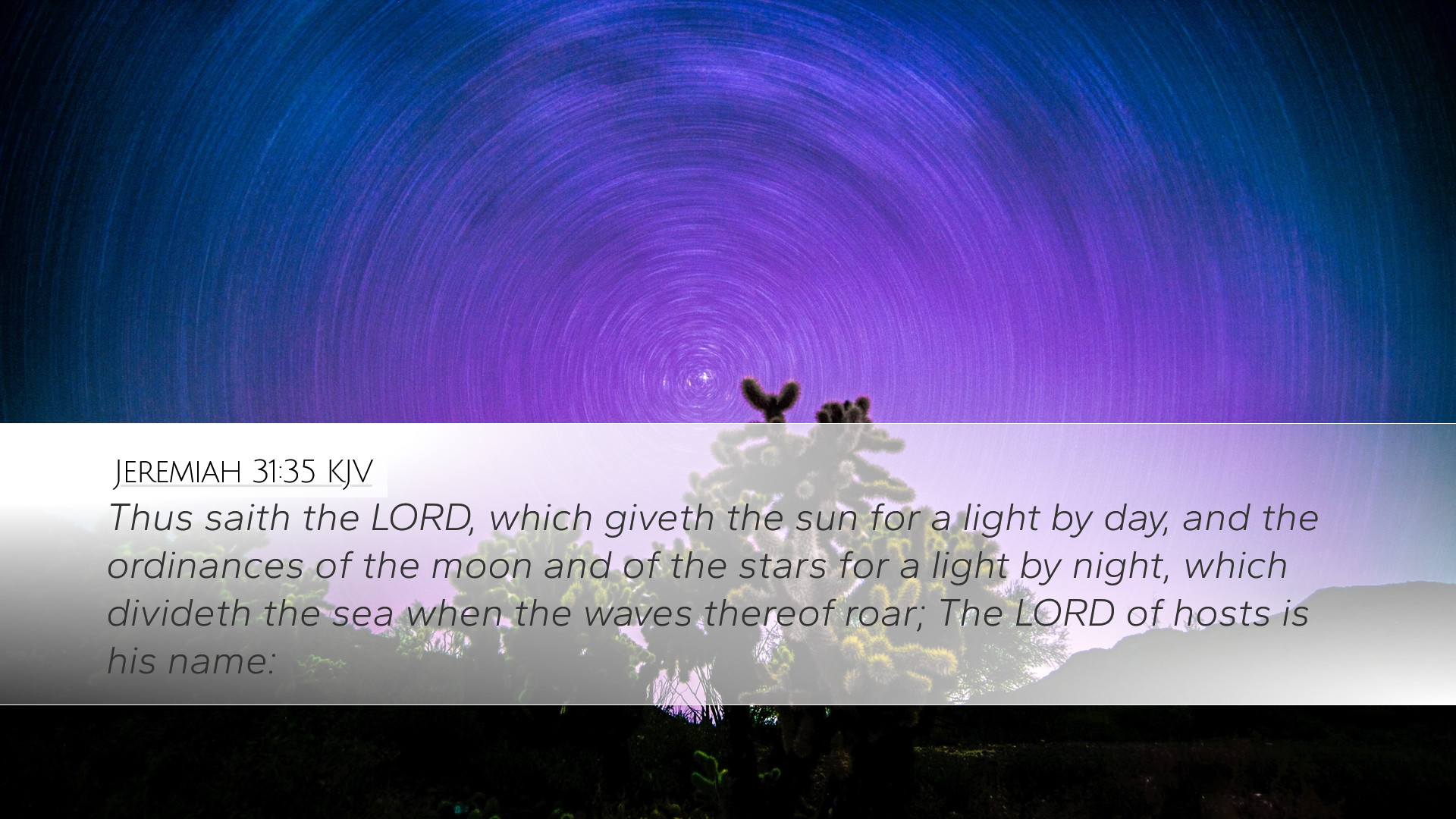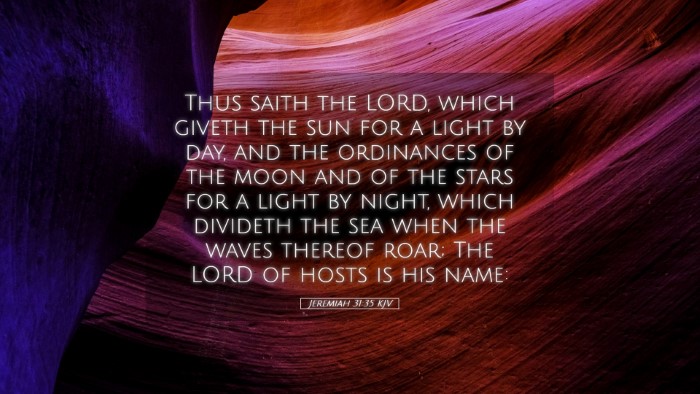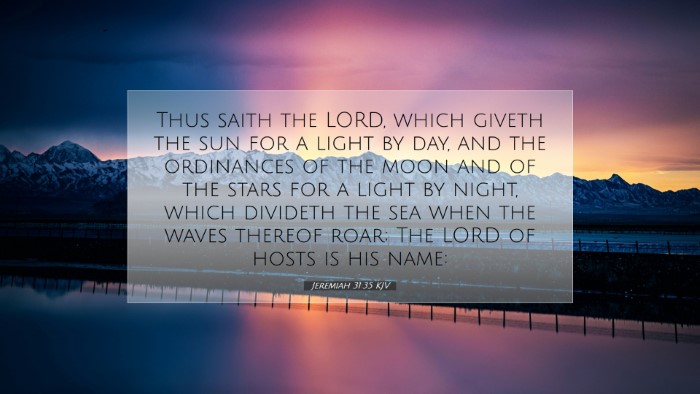Commentary on Jeremiah 31:35
Verse Text: "Thus saith the Lord, which giveth the sun for a light by day, and the ordinances of the moon and of the stars for a light by night, which divideth the sea when the waves thereof roar; The Lord of hosts is his name."
Introduction
This verse stands as a declaration of God's sovereign power and faithfulness to His covenant people. The imagery of creation serves not only to show God's authority but also to remind the people of Israel of His unchanging nature and the permanence of His promises.
Theological Significance
Jeremiah 31:35 is particularly rich in theological implications as it illustrates God’s sovereignty over the natural world. Commentators such as Matthew Henry emphasize that God, who established the laws of nature, guarantees His covenant with His people. His control over the sun, moon, and sea reassures believers that He will fulfill His promises.
Creation as a Metaphor for God's Promises
Albert Barnes points out that God's creation—the sun that lights the day and the moon that guides the night—serves as a metaphor for His everlasting covenant. Just as the cycles of nature are reliable and consistent, so too are God’s promises. This comparison underscores the idea that if God can uphold the universe, He can certainly uphold His covenant with His people.
Key Components of the Verse
- The Sun and Moon: The sun symbolizes daylight and guidance, while the moon represents the shifting phases of life but remains constant in its presence. They are metaphors of God’s attention and provision.
- Ordinances of Creation: The “ordinances” reference the laws that govern both celestial bodies and the sea. This implies a divine order in creation that reflects God's control and intentionality.
- The Lord of Hosts: This title stresses God's authority over all armies and powers, both heavenly and earthly, reinforcing that He is sovereign over all creation.
Insights from Commentators
Matthew Henry's Reflection
Henry emphasizes that the stability of the sun and moon is a sign of God’s covenant fidelity. Just as these celestial bodies are predictable, so too is God's commitment to His people. This assurance is critical for the people of Israel, who faced uncertainty during Jeremiah's time.
Albert Barnes's Explanation
Barnes elaborates that God’s declaration in this verse establishes a foundation for trust. He reassures His people that the same God who commands the natural world will ensure the security of their future.
Adam Clarke's Commentary
Clarke discusses the linguistic aspects and the imagery used in this verse. He notes that in Hebrew literature, creation often reflects divine attributes. This verse, therefore, implies not only God’s power but also His desire for a relationship with His people, rooted in the consistent and faithful acts of creation.
Covenantal Context
This verse is situated within the broader context of the New Covenant promises found throughout Jeremiah 31. As outlined by Henry, this chapter moves from a message of judgment to one of hope and restoration. God's promises are not just about individual blessing but about the collective restoration of the nation of Israel.
- Encouragement Amidst Judgement: The Israelites were experiencing the consequences of their disobedience. God’s reminder of His unchanging nature serves as a source of hope for the faithful.
- Anticipation of the Messiah: The New Covenant hinted at in this passage looks forward to Christ, who fulfills these promises and establishes a new relationship between God and humanity.
Application for Today's Believers
For pastors, students, and scholars, Jeremiah 31:35 serves as a powerful reminder of God’s faithfulness amidst uncertainty. As God's creation remains steady, believers are called to trust in His promises, even when circumstances suggest otherwise.
Trust in God’s Sovereignty
One primary application of this verse is the importance of trusting in God's sovereignty. Just as the sun rises and the moon shines without fail, God’s faithfulness is unwavering. Believers are encouraged to rely on the character of God during trials, as emphasized by Clarke’s commentary on divine order.
Hope in Restoration
This verse assures believers that no matter how dire the situation, God is attentive and capable of bringing restoration. This theme of hope should energize believers in their mission to share the gospel and demonstrate God’s love.
Conclusion
In summary, Jeremiah 31:35 encapsulates profound truths concerning God’s character, His love for His people, and the reliability of His promises. The insights from esteemed commentators such as Matthew Henry, Albert Barnes, and Adam Clarke provide a rich theological framework that encourages reflection and application for all believers.


